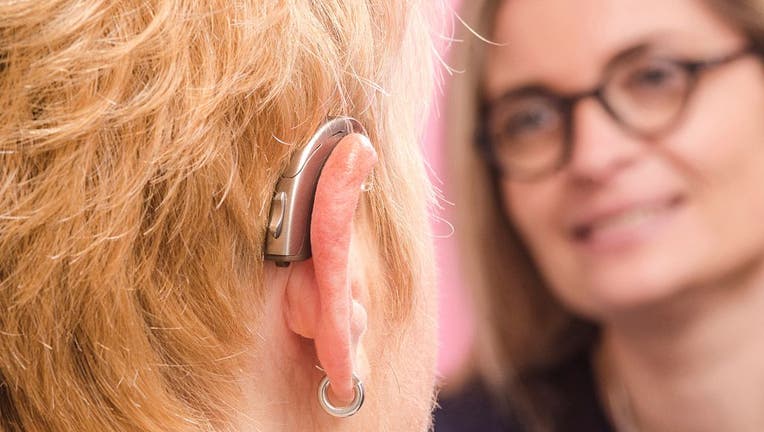FDA allows new class of hearing aids to be purchased without a prescription

Reportage in a hearing care professional practice. (Photo by: BSIP/Universal Images Group via Getty Images)
WASHINGTON (AP) - Millions of Americans will be able to buy hearing aids without a prescription later this fall, under a long-awaited rule finalized Tuesday.
The regulation creates a new class of hearing aids that don't require a medical exam, a prescription and other specialty evaluations, the Food and Drug Administration said. That's expected to increased competition and eventually lower costs. The devices will be sold online or over-the-counter at pharmacies and other retail stores.
The devices are intended for adults with mild to moderate hearing problems. The FDA estimates that nearly 30 million adults could potentially benefit from a hearing aid, though only about one-fifth of people with hearing problems currently use one.
"Today’s action by the FDA represents a significant milestone in making hearing aids more cost-effective and accessible," Health and Human Services Secretary Xavier Becerra, told reporters Tuesday.
The FDA first proposed the rule last year and it will take effect in mid-October. The move follows years of pressure from medical experts and consumer advocates to make the devices cheaper and easier to get.
Cost is a big obstacle now. Americans can pay more than $5,000 for a hearing aid, between the device and fitting services. Insurance coverage is limited and Medicare doesn’t pay for hearing aids, only diagnostic tests.
"The requirement to see a specialist was not only a burden and an annoyance for many consumers but it actually created a competitive barrier to entry," said Brian Deese, a White House economics adviser.
Deese cited government estimates that Americans could eventually save as much as $2,800 per pair. But FDA officials cautioned against predicting the size of savings or how quickly they might arrive, noting much will depend on when manufacturers launch products and how they price them.
FDA officials said they expect to see increased competition from new manufacturers as well as new products from existing hearing aid makers.
Medical exams and fittings now account for about two-thirds of hearing aids’ cost, according to Kate Carr, president of the Hearing Industries Association, which represents manufacturers. Five companies make most of the devices sold in the U.S., she noted, though about 80 companies are registered with FDA to market the products.
"Given that this has been discussed for five years now, I suspect businesses have had the opportunity to think about their plans and prepare for this," Carr said.
The new over-the-counter status won't apply to devices for more severe hearing loss, which will remain prescription only.
Glenda Greer, of Loudon, Tennessee, said she struggled to hear conversations at work and in crowded restaurants for seven years before recently getting fitted for her first hearing aid.
"It just made things so much easier because I didn’t have to focus on peoples' faces and trying to read lips," said Greer, a recently retired nurse.
Consumer electronic companies for years have produced lower-cost "personal sound amplification" devices, but they do not undergo FDA review and U.S. regulations bar them from being marketed as hearing aids.
The FDA said it changed several parts of its initial proposal in response to public comments, including clarifying how the rule will impact state regulations.
Tuesday’s announcement follows prodding from medical committees and Congress, which in 2017 instructed the agency to lay out a plan for over-the-counter hearing devices.

